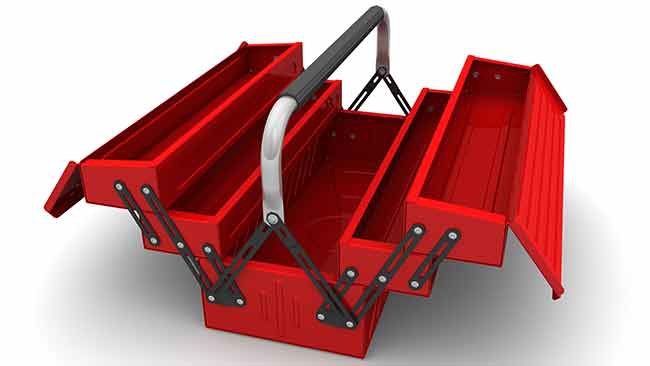
Tools of the trade – April 2016
By Sean Kingswell
Features Health and Wellness WellnessA structure fire. Adrenaline-filled fire crews work the irons and power tools as their SCBAs supply much-needed air. Hand lamps provide a dim glow as the light reflects off the blinding, acrid smoke. Over deafening noises, radios attempt to keep crews in constant contact. A centrifugal pump whines as it pushes water through a hoseline and out the open nozzle. Diligent personnel and their important tools work in unison until their properly applied extinguishing agent attains the benchmark, “loss stopped.”
 Firefighters have the tools at their disposal to take a responsible and educated stance on firefighter wellness
Firefighters have the tools at their disposal to take a responsible and educated stance on firefighter wellnessFirefighters respect the tools they use on the job. The incorrect use of any of the tools in the above scenario has the potential to prevent overall success and safety. Firefighter health and wellness requires its own set of tools.
Welcome to Tools of the trade. These columns will offer a comprehensive tool kit of firefighter wellness. This column is a form of outcome-based wellness coaching in which there is no place for facilitator judgment, shaming or negativity. Successful wellness coaching looks to inspire and motivate while requiring honesty, transparency and respect toward those you are trying to reach. Some concepts may ask you to challenge current habits, preconceived notions or antiquated practices. Though change is fundamentally the definition of stress, if that change brings about improved health and wellness, I encourage you to see it for what it can be: eustress (good stress). Knowledge and acceptance of wellness practices have progressed dramatically and firefighters deserve to be at the forefront.
We often think of the word healthy as a descriptive of physical and mental condition. Although the World Health Organization has long warned against it, we may use the absence of disease as a positive assumption. Not being sick does not equal healthy. Health and wellness are cousins and both are multifaceted. For the sake of simplicity, consider health as your overall condition, whereas wellness is about recognizing the different elements, acknowledging their importance and choosing to effectively enact them towards optimum health. Enjoying what life has to offer, and wellness, are not mutually exclusive. Wellness is about living life to the fullest and, quite simply, a balance in both overall wellness and its individual elements. Wellness is not about an excessively rigid life, or perfection, merely responsible, overall lifestyle choices and successful habit formation with a simplified plan for long-term adherence.
As with the tool kit on your fire truck, the wellness tool kit has a range of implements. The more common tools are usually resistance training, cardiovascular training, flexibility, nutrition and stress management. As we dig deeper we can see that there are more tools, including sleep, recovery, injury prevention, cancer prevention, healthy body composition, goal setting, adherence strategies, hydration, auditory health, smoking cessation, foam rolling, core strength, medical diligence and more.
Each tool in the kit is ideally implemented with firefighter specificity in mind. As with a hoseline, nozzle and pump, wellness tools must work together for each one to succeed.
Why truly pay attention to wellness? First of all, firefighters are occupational athletes. The demands of fire fighting can be overwhelming to both the cardio respiratory and musculoskeletal systems. Dangers include physical harm from the nature of fire fighting, and exposure to toxins. Body composition, heart health, flexibility, core strength, endurance and smoking cessation all have implications on performance and injury prevention. Sleep patterns affect stress, and are affected by stress. Food and hydration have a direct impact on how we are fuelled, with fire fighting drawing from all three metabolic pathways.
Personal wellness choices affect more than just the individual firefighter. Negligence puts a firefighter’s family at risk of a lost or injured loved one. Staying well for the crew can also be one of the many motivators toward wellness.
Keep in mind there is a difference between information and buy-in. Information is a form of knowledge while buy-in involves acknowledging the significance of that knowledge. Buy-in is a huge part of wellness. I often teach buy-in as a series of steps. First, have an honest look at how a particular piece of information, or in this case, a particular wellness concept is applicable to you. This involves true introspection and honesty. Secondly, consider the risks of failing to effectively incorporate that knowledge. Neglecting any elements from cardio and resistance training to sleep and stress management can have significant acute and chronic negative effects on firefighters. Finally, educate yourself on the benefits of putting that knowledge into action.
The buy-in process is the first action step in this series. Please examine the different elements of wellness we have discussed and candidly assess whether you are responsibly implementing each. If you are not, ask yourself why. In upcoming columns you will learn strategies for the different buy-in elements.
We have the tools at our disposal to take a responsible and educated stance on firefighter wellness.
Sean Kingswell is an experienced professional firefighter, personal trainer, fitness coach and the creator of the FIRESAFECADETS program. firesafecadets@gmail.com @firesafecadets
Print this page